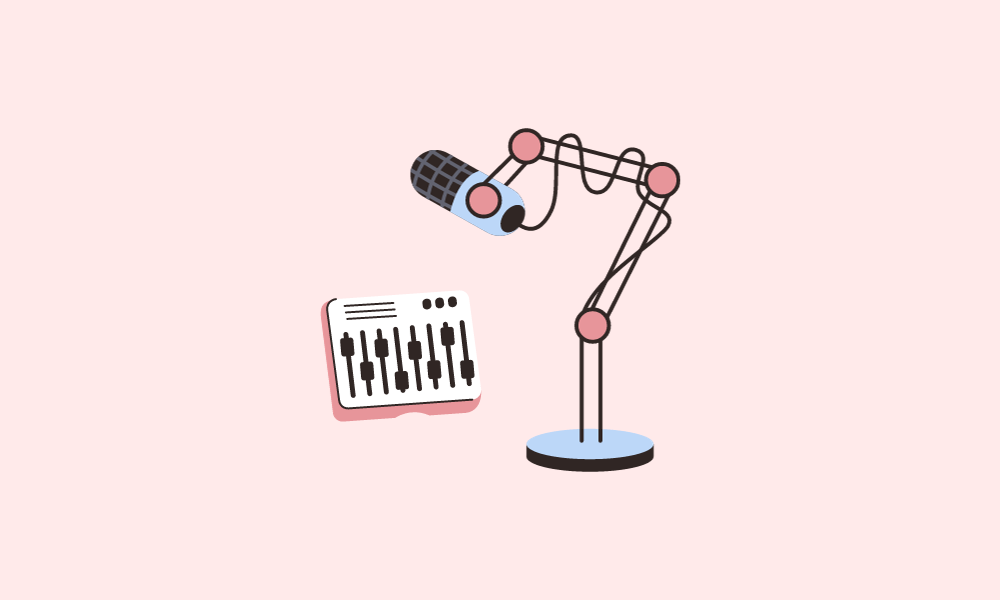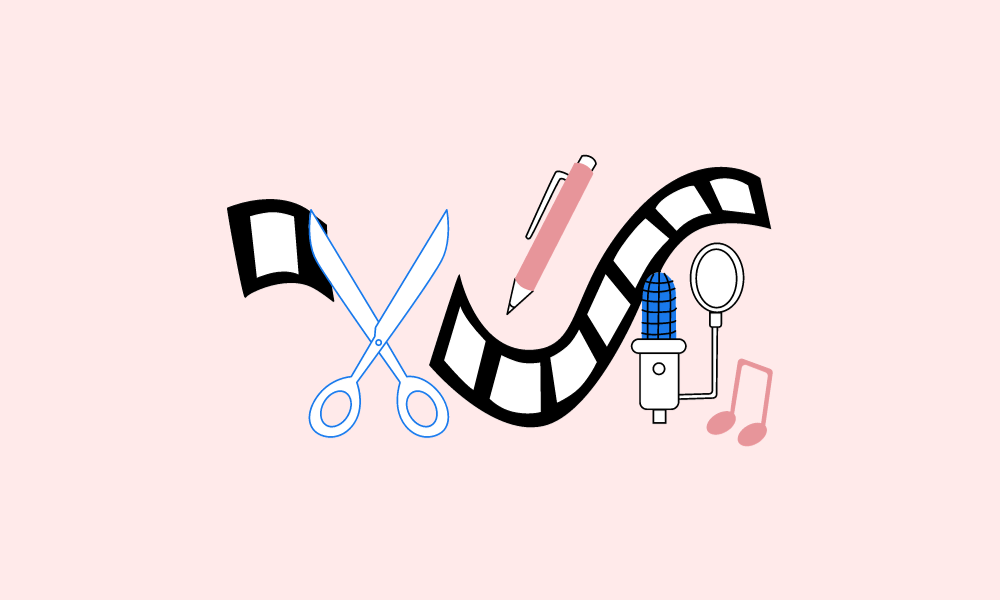How to Record a Podcast: A Coaching Business Game-Changer

In the heart of today's digital age, you've likely heard the buzz—podcasting is more than just a trend; it's a revolution. Everyone from celebrities to your next-door neighbor seems to be diving into the podcasting realm.
But here's a secret: podcasting isn't just for the latest pop culture or tech trends. You might be sitting on a goldmine of opportunity if you're a coach—whether in life, business, health, or any niche in between.
Picture this: a potential client is on their morning jog or driving home from work and tuned into your podcast. Your insights and expertise are right in their ears, building trust and laying the foundation for a thriving coaching relationship. Podcasting isn't just a platform; it's a bridge—one that connects your invaluable skills to those who need them the most. It's the new stage where coaches can truly shine.
Before you panic and think, "But I don't know the first thing about how to record a podcast!" stick around. This guide has got you covered. Let's dive deep into making podcasting your coaching business's game-changer.
Buckle up! Here’s what we’ll cover in this article
Mapping Out Your Podcast Adventure
Ready to start your podcast journey? Let's kick things off by understanding the importance of planning and laying a strong foundation for your episodes.Setting the Stage for Flawless Recordings
We'll guide you through essential pre-recording checks, ensuring each episode flows seamlessly—especially when hosting a guest!Gear Up: Choosing the Perfect Equipment
Dive into the world of mics, headphones, and audio interfaces. We've got the lowdown on making choices that fit your budget and needs.The Right Software: Nailing Audio Perfection
Unpack software's vital role in your podcasting venture, and discover the best tools out there to capture and edit your sound.Finding Your Sound Sanctuary
From home setups to pro studios, learn how to pick the perfect spot, ensuring crisp, clear audio with minimal disturbances.Post-Production: Making Your Podcast Shine
Let's delve into the art of post-production! We'll show you how to trim, enhance, and add that signature touch to your episodes.Tips and Tricks for Budding Podcasters
From enhancing voice clarity to avoiding common pitfalls, these tried-and-tested tricks will make your podcasting journey smooth sailing.Diving Deeper: Need More Information?
Craving more insights? Check out our curated list of in-depth resources that'll quench your thirst for podcasting knowledge.
Mapping Out Your Podcast Adventure

"By failing to prepare, you are preparing to fail." While we're positive founding father Benjamin Franklin didn't have podcasting in mind when he said this, it's pretty accurate for those stepping into the world of podcasting.
Your journey of becoming a podcast sensation (or at least reaching your desired audience effectively) begins long before you hit the record button. Let's discuss why planning is the golden key to a stellar podcast and how you, as a coach, can harness this power.
The Significance of Pre-Production Planning
Diving headfirst into recording without a plan is akin to setting off on a cross-country road trip without a map. You might stumble across some interesting places, but there's a good chance you'll end up lost, frustrated, or with a show that rambles more than it resonates.
When you plan, you ensure that:
Content Cohesiveness: Every episode aligns with your podcast's overarching goal, whether that's to establish authority, provide guidance, or build a community.
Optimal Resource Utilization: You'll know when to schedule guests, how to allocate your time, and what resources you'll need, reducing wastage and last-minute rushes.
Consistency: The bane of many podcasts is erratic releases or fluctuating quality. Planning ensures you maintain a steady rhythm and high-quality content, which is vital for audience retention.
Structuring Your Episodes: Duration, Frequency, and Theme
Ah, the age-old question: "How long should my podcast episode be?" Well, there isn't a one-size-fits-all answer. But here's a formula that works: as long as it needs to be to provide value, not a minute more. Whether that's a punchy 15 minutes or an in-depth hour depends on your content and audience.
Duration: It's essential to respect your listener's time. Be succinct but comprehensive. If a topic needs deep-diving, consider breaking it into parts.
Frequency: As a coach, your schedule might be packed. Whether you decide on a weekly, bi-weekly, or monthly episode release, consistency is key. Stick to your schedule, and your listeners will stick with you.
Theme: Having a theme or central idea for a series of episodes can be gold. It provides continuity, hooks listeners, and can showcase your coaching expertise in a structured manner.
Tips on Researching and Scripting: No More Last-Minute Scrambles
If you've ever been up at 3 a.m., coffee in hand, panicking about tomorrow's presentation, you know the perils of last-minute preparation. Here's how to avoid that in your podcasting journey:
Research Deeply: Not just about your topic but also about potential guests, recent trends, and opposing views. As a coach, your credibility hinges on accurate and updated information.
Script, but Don't Over-Script: While writing down every word is tempting, avoid sounding robotic. Instead, create an outline with key points, ensuring a natural flow while staying on track.
Stay Ahead of Schedule: Pre-record episodes when possible. This cushion can be invaluable during unexpected life events or busy coaching periods.
In conclusion, think of planning as laying down the tracks for your podcasting train. With the right foundation, your podcast runs smoothly and can speed ahead, making meaningful impacts and elevating your coaching business to unparalleled heights.
Setting the Stage for Flawless Recordings

Stepping up to the microphone can feel daunting. Whether it's the first episode or the fiftieth, ensuring a smooth recording experience is crucial for both the host and the listeners.
Remember, a seamless recording is often a direct result of thorough preparation. As the saying goes, "The more you sweat in peace, the less you bleed in war." So, let's prepare you to nail every recording session, no sweat!
Creating a Recording Checklist
An organized podcaster is a successful podcaster. Think of your recording checklist as the safety net that catches any forgotten elements:
Equipment Ready: Microphone, headphones, recording software—all checked and tested.
Environment: A quiet, disturbance-free space. Phones on silent, please!
Backup: Always have a backup recording option. Trust us, tech can (and does) fail.
Notes & Outline: Keep your episode outline and any necessary notes within arm's reach.
Following this checklist religiously can drastically reduce the "Oops, I forgot!" moments.
Setting Clear Objectives for Each Episode
As a coach, you understand the power of goal-setting. Your podcast episodes deserve the same clarity:
Define the Episode's Purpose: Is it to inform, inspire, entertain, or all three?
Takeaways for the Listener: By the end of the episode, what should the listener learn or feel?
Call to Action: Do you want listeners to sign up for a newsletter, book a session, or simply ponder a thought-provoking question?
When your objectives are clear, your path naturally becomes more defined, making the journey (or recording) much smoother.
Pre-Interview Preparations for Guest Episodes
Guest episodes can be goldmines of value, but they need extra care:
Research Your Guest: Understand their expertise, previous interviews, and style.
Clear Communication: Ensure they know the podcast's format, expected duration, and main topics.
Technical Checks: Before the interview, test the call quality, software, and backup options. No one likes "Can you hear me now?" moments.
Remember, a well-prepared guest not only enriches your content but can also introduce your podcast to their audience. Win-win!
Tips for Keeping the Energy Up and Maintaining Flow
We've all heard that monotone podcast that's a surefire cure for insomnia. Don't be that podcast:
Stay Hydrated: A simple tip, but water can keep your voice clear and energy levels up.
Physical Warm-Ups: A quick stretch or walk can get the blood flowing. For some, it might sound odd, but try it!
Mental Engagement: Stay genuinely curious in the topic or guest. Authenticity is palpable.
Breaks: If you're not live, remember it's okay to pause, take a deep breath, or even step away for a minute. Recharge and return.
Preparation might seem tedious, but it's the key that unlocks a confident and effective podcasting experience. As you'd guide any coachee: by setting clear intentions, doing the groundwork, and keeping an authentic, positive energy, you're well on your way to creating a podcast that resonates and makes an impact.
Gear Up: Choosing the Perfect Equipment

Stepping into the world of podcasting can sometimes feel like wandering into a tech wonderland—and getting overwhelmed is easy. But fear not! Like the tools you use in your coaching business, choosing the right podcasting equipment is about understanding your needs and finding the best fit.
Let's break down the essentials, demystify the jargon, and guide you to informed decisions that won't break the bank.
Breaking Down the Necessary Gear
Microphones: The heart of your podcast. The choices are vast, but you'll mainly be choosing between dynamic and condenser mics. Dynamic mics are generally more rugged and less sensitive (great for noisy environments), while condenser mics offer a richer sound but can pick up more background noise.
Headphones: Essential for monitoring your voice and catching any audio hiccups during recording. You'd want closed-back headphones for a clear, isolated sound.
Audio Interfaces: This is the bridge between your microphone and your computer. It converts the mic's analog signal into a digital one your computer understands. While many USB mics bypass the need for an interface, dedicated interfaces often offer superior sound quality.
Alitu's Insights: Making Informed Equipment Choices
Diving deeper into the realm of podcasting equipment, the experts over at Alitu.com have shared some invaluable insights that can guide your buying decisions:
Sound Environment: Before considering which mic to purchase, evaluate your recording environment. A top-tier microphone in a noisy setting might not outperform a mid-range mic in a quiet, well-treated room.
User-Friendliness: As a coach, your expertise lies in guiding and helping people, not necessarily in mastering complex tech setups. Alitu.com recommends prioritizing equipment that is easy to set up and use, especially if you're a solo podcaster without a tech team.
Integration with Editing Software: Post-production is a vital part of podcasting. Consider gear that seamlessly integrates with popular editing software, ensuring a smooth transition from recording to editing.
Invest in What Matters: Not all pieces of equipment demand equal investment. Allocate more of your budget to where it counts the most. The microphone is the prime contender for most podcasters, the main tool capturing your voice and message.
The Smartphone Debate: Can You Record Your Podcast on a Phone?
Pros:
Portability: Your recording studio is right in your pocket, especially useful for on-the-go episodes.
Affordability: No need for immediate investments in high-end gear.
Ease of Use: Intuitive, user-friendly, and perfect for beginners.
Cons:
Sound Quality: While decent, phones often can't match the quality of dedicated mics.
Limited Flexibility: Adjusting settings, connecting to other equipment, or handling multiple inputs can be challenging.
Smartphones can be a boon for spontaneous interviews or episodes where ambiance matters (imagine recording at a live coaching event!). However, if consistent audio quality is your priority, it might be wise to invest in dedicated gear.
Recommendations: Specific Equipment Options for Varying Budgets
Budget-Friendly:
Microphone: Audio-Technica ATR2100x-USB - A versatile mic that offers both USB and XLR connections.
Headphones: Sony MDRZX110/BLK ZX Series Stereo Headphones - Reliable and won't break the bank.
Audio Interface: Behringer UMC22 - A cost-effective solution for starters.
Mid-Range:
Microphone: Rode NT-USB - A favorite among many podcasters for its clarity.
Headphones: Audio-Technica ATH-M40x - Offers exceptional sound quality for the price.
Audio Interface: Focusrite Scarlett 2i2 - A best-seller known for its reliability and sound quality.
Premium:
Microphone: Shure SM7B - A professional-grade mic you'll find in many top-tier studios.
Headphones: Beyerdynamic DT 770 PRO - For those who want nothing but the best.
Audio Interface: Universal Audio Apollo Twin MKII - A powerhouse offering top-notch audio conversion.
In conclusion, while the equipment landscape might seem vast, remember it's all about finding the tools that complement your unique podcasting journey. With a clear understanding of your needs, a dash of research, and maybe a sprinkle of tech enthusiasm, you'll be well-equipped (pun intended!) to share your coaching insights with the world.
The Right Software: Nailing Audio Perfection

When you've coached as many sessions as you've had, you understand the importance of listening. In the podcasting realm, ensuring that your voice, insights, and interviews are captured crisply is vital. While equipment sets the stage, software is your silent partner in ensuring everything sounds impeccable.
Let's navigate this digital landscape together and find the right software solutions for your podcasting journey.
Understanding the Role of Software in Podcasting
Recording: Software solutions help capture audio, often offering multiple tracks for different speakers. This is invaluable for interviews or panel discussions, allowing for easier editing later on.
Editing: Mistakes happen! Software lets you trim, adjust, and perfect your audio, ensuring your podcast sounds polished and professional.
Enhancing: Beyond simple cuts, advanced software can help enhance audio quality, reduce background noise, and even add music or sound effects.
Publishing: Some software options offer direct integrations with podcast hosting platforms, streamlining the process from final edit to publishing.
What to Look for in Podcasting Software
There are a few key features to consider when deciding on podcasting software:
Reliability: The last thing you want is software crashing mid-recording. Always opt for solutions with strong user reviews and proven track records.
Ease of Collaboration: If interviewing guests or co-hosting, consider software that allows for multi-user recording or easy file sharing.
Audio Quality: Some software solutions provide better audio compression and quality than others. Ensure your chosen solution maintains high fidelity, especially if you invest in good equipment.
Integration Capabilities: Does the software play well with other tools? Seamless integration with hosting platforms, transcription services, or even marketing tools can save heaps of time.
Comparing Popular Recording and Editing Software Options
Audacity: A free, open-source software many beginners love for its simplicity. It's equipped for recording and basic editing.
Adobe Audition: A more professional suite, this software is a favorite among seasoned podcasters for its advanced audio editing and enhancing capabilities.
GarageBand: Exclusively for Mac users, GarageBand is user-friendly and offers a decent array of tools for recording and editing.
Alitu: This web-based tool automates much of the editing process, making it perfect for those who might be less tech-savvy. It's great for combining segments, adding music, and even publishing.
Recommendations: Best Software Choices for Beginners and Pros
For Beginners:
Audacity: Its free price tag and comprehensive suite of basic editing tools make this a go-to choice for newcomers.
Alitu: With its automated processes and user-friendly interface, Alitu makes podcast editing almost a breeze. Plus, it offers handy publishing tools for those looking for an all-in-one solution.
For Pros:
Adobe Audition: Its robust features allow for intricate editing, noise reduction, and multi-track recording. Ideal for those who are well-versed in audio editing and are looking for finer control.
Hindenburg Journalist: This is a top-tier choice that offers many advanced features. Known for its automation and intelligent audio leveling features, it's a favorite among podcasting veterans.
Think of your software as the backstage crew of a theater production. They might not be in the spotlight, but their role is pivotal in ensuring the show goes on without a hitch. Whether you're just starting out or are a seasoned podcaster, there's a software solution out there that fits your unique needs like a glove.
Finding Your Sound Sanctuary

Picture this: you've invested time in preparing for your podcast episode, you've got the right equipment, and your editing software is up and ready. You hit 'record', and just as you deliver that power-packed piece of wisdom – a car honks, a dog barks, or worse, the echo in the room muddles your words. Sound familiar? Your recording environment is just as critical as any gear or software.
Let's dive into the importance of your podcasting space and how to optimize it.
Importance of Acoustics and Minimizing External Noise
Imagine your voice as a bouncing ball. In a room with poor acoustics, it bounces around unpredictably, causing echoes and distortion. A well-treated space ensures your voice sounds clear, warm, and, most importantly, professional.
Moreover, the distracting hum of an AC or distant chatter can pull listeners out of the experience, making minimizing external noise paramount.
Home Studio vs. Professional Studios: What's Best for You?
Home Studio:
Pros: Convenient, cost-effective in the long run, and allows for impromptu recording sessions.
Cons: May require an initial investment for soundproofing and may not offer the same acoustic quality as professional studios.
Professional Studios:
Pros: Top-notch acoustics, high-end equipment at your disposal, and a dedicated space free of interruptions.
Cons: Can be pricey, needs scheduling, and might not be feasible for frequent recordings.
For many coaches, especially when starting, a home studio strikes a balance between convenience and quality. However, considering a professional studio might be worth the investment if a significant episode or interview is on the horizon.
Tips: Quick Hacks to Improve Room Acoustics
Rugs and Carpets: Hard floors are a culprit for bouncing sound. A simple rug or carpet can drastically reduce this effect.
Bookshelves: A room's aesthetics and acoustics both get a boost. Books break up sound waves, helping to minimize echo.
Hang Curtains: Windows can reflect sound. Thick curtains help with sound and control light for any video recordings.
DIY Sound Panels: Craft your panels using foam or old towels. There are tons of tutorials online!
Room Position: If possible, choose a room or space away from street noise and not directly next to a bathroom or busy common area.
The Significance of Background Noises and How to Mitigate Them
Ambient noises, though sometimes subtle, can be distracting to listeners. The hum of an appliance, a ticking clock, or even an AC can muddy your podcast's clarity. Being aware is half the battle. Before recording:
Conduct a short test recording to catch any persistent noises.
Turn off unnecessary appliances and gadgets.
Inform family members or co-inhabitants to minimize interruptions.
In the world of podcasting, silence truly is golden.
In wrapping up, while your insights, experiences, and stories are the soul of your podcast, the environment in which you capture them is the vessel. A bit of time and attention to your recording space can elevate your podcast from amateur to professional, ensuring your coaching wisdom resonates loud and clear.
Post-Production: Making Your Podcast Shine

So you've finished recording your podcast episode—congratulations! But if you think the job's done, think again. Post-production is where the magic happens, where you transform that raw audio into a polished gem ready for the eager ears of your audience.
Whether you're a life coach sharing self-improvement strategies or a business coach discussing market dynamics, the finishing touches can make all the difference. Let's unveil the curtain on this crucial stage.
The Role of Editing in Creating a Polished Final Product
Editing is like sculpting. From a block of marble—your raw recording—you chip away the excess, refine the details, and bring out the masterpiece within. Editing helps:
Trimming the Fat: Remove awkward pauses, stumbles, or any off-topic ramblings.
Sequencing for Flow: Reorder segments to ensure your podcast has a logical and engaging flow.
Enhancing Clarity: Improve sound quality and remove any distractions to keep your listener's focus where it belongs—on your message.
Basics of Audio Enhancement: Leveling, Noise Reduction, and Equalization
Leveling: This ensures all parts of your podcast are at a consistent volume. Leveling ensures listeners won't be fumbling with the volume control, whether it's your voice, your guest's voice, or any musical segments.
Noise Reduction: Those little background noises you might've missed while recording? This step eliminates or reduces them. It's all about clarity, ensuring nothing detracts from your content.
Equalization: Think of this as adjusting the bass, mid, and treble for your audio. It helps your voice sound more natural and clear, giving your podcast that professional touch.
Adding Intros, Outros, and Jingles: Making a Memorable Impression
Your podcast isn't just about the main content. It's a complete package.
Intros: This sets the stage, giving listeners a glimpse of what's to come. A well-crafted intro captivates attention right from the get-go.
Outros: Your sign-off, the final impression. Use it to thank listeners, provide a call to action, or tease the next episode.
Jingles: These catchy snippets, sprinkled throughout your podcast, add a professional sheen and make your content more memorable. Think of your favorite radio show and how jingles play a part in its identity!
Tips for Efficient and Effective Post-Production
Templates are Time-Savers: Create templates for segments you use frequently, like your intro and outro. This way, you're not starting from scratch with each episode.
Take Breaks: Fresh ears catch mistakes. After editing, step away and return later to ensure you haven't missed any glitches.
Keyboard Shortcuts: Most editing software has them. Mastering these can significantly speed up your editing process.
Ask for Feedback: Share your edited episode with a trusted friend or colleague before releasing. They might catch something you missed or offer valuable perspective.
Stay Updated: Software updates often bring new tools or improved features. Regularly updating ensures you have the best tools at your disposal.
Post-production is your podcast's final frontier. While it might be tempting to skip or rush through this phase, giving it the time and attention it deserves will elevate your podcast to new heights. After all, as a coach, you know the value of polish and presentation, and your podcast deserves nothing less.
Tips and Tricks for Budding Podcasters

Stepping into the podcasting arena can be a game-changer for coaches. While content is king, its presentation can either enthrall or disengage listeners. But fear not, aspiring podcaster! Here's a treasure trove of tips and tricks to ensure your show stands out in this ever-expanding universe of voices.
Best Practices for Enhancing Your Voice Clarity
Your voice is the heart of your podcast, and ensuring its clarity is paramount. Here's how:
Hydration: Drinking water keeps the vocal cords lubricated, ensuring a clear, crisp voice.
Mic Technique: Don't get too close or too far. Find the sweet spot where your voice sounds natural without pops or hisses.
Posture Matters: Sit or stand straight. This not only improves voice clarity but also boosts confidence.
Warm-Up: Just like singers, do some vocal warm-ups. This helps in tonal clarity and range.
Techniques to Engage Listeners and Keep Them Hooked
Storytelling: Stories resonate. Weave anecdotes or client success stories into your episodes. They help in making points relatable and memorable.
Interactive Segments: Engage listeners with Q&A sessions, polls, or short quizzes related to previous episodes.
Involve Your Audience: Highlight listener comments or questions in your episodes. When listeners feel seen and heard, they're more likely to stay hooked.
Pacing: Use a mix of slow, introspective segments and faster, more energetic ones to keep the rhythm varied and engaging.
Addressing Common Recording Pitfalls and How to Avoid Them
Podcasting isn't without its pitfalls. Here's a quick guide to navigate through common issues:
Inconsistent Audio Levels: Avoid sudden spikes or drops in volume. Use software tools for leveling or manually adjust during editing.
Over-Editing: Aim for clarity, not perfection. Over-editing can make your podcast sound robotic and inauthentic.
Ignoring Background Noise: Always do a sound check before recording. Identify and eliminate potential noise sources.
Rambling: Stick to your script or outline. It's okay to improvise, but avoid going off on tangents. Keep your listener's journey in mind.
The Art of Mixing: Balancing Music, Voice, and Sound Effects
Music: It sets the mood. Whether it's the upbeat intro or the calming outro, ensure it complements your voice rather than overshadowing it. Remember, the volume of background music should always be lower than your voice's.
Voice: This is your primary instrument. Make sure it stands out clearly in the mix. If you have multiple voices (like in an interview), ensure they're at the same level.
Sound Effects (SFX): When used sparingly, SFX can enhance storytelling. But overuse can be jarring. Use them to punctuate important moments or to add atmosphere. Always ensure they're at an appropriate volume—noticeable but not overwhelming.
Transitions: When moving from one segment to another, use brief musical interludes or SFX to signal the change. This helps in maintaining a smooth flow.
To all the coaches ready to amplify their voices and messages: podcasting is a brilliant medium to explore. There's a learning curve, but you'll find your groove with these tips and a sprinkle of patience.
Diving Deeper: Need More Information?
While we've unpacked a treasure trove of insights here, the true magic happens when you infuse these tools, tips, and techniques with your unique personality and style.
Like any craft, podcasting is a continuous learning and evolution journey. You might face challenges, but they're merely stepping stones to mastering the art. Experiment with formats, tweak your audio settings, play with your scripts—innovate, and most importantly, have fun.
Now, as promised, here are some fantastic deep-dive resources to further fuel your podcasting passion:
Equipment Deep Dive: Understand the intricacies of podcasting gear with this comprehensive guide: The Ultimate Guide to Podcasting Equipment.
Software Exploration: For those diving deep into software solutions, here's a gem: Podcast Software: The Complete Guide, from Plan to Edit
Rise Above the Rest: Want your podcast to stand out among the crowd? Dive into: The Traits The Best Podcast Hosts Share
Avoiding Pitfalls: For a deeper look into common pitfalls and how to sidestep them, check out: The 10 Biggest Podcasting Mistakes You Need to Avoid.
Editing Techniques: Ready to become an editing master? Here's your resource: Podcast Editing: How to Edit a Podcast Properly.
Podcasting in today's digital age is more than just a trend—it's a powerful medium here to stay. As a coach, your insights, stories, and experiences can inspire, motivate, and transform lives. So, take that mic, embrace your message, and let your voice ripple through the vast ocean of the podcasting world.
In the wise words of radio veteran Ira Glass: "Great stories happen to those who can tell them." You've got your story, coach. Now's the time to share it.
Amplifying Your Coaching Voice Through Podcasting
In today's digital era, podcasts have cemented their place as a powerful communication tool. For coaches, this medium presents an invaluable opportunity. Imagine reaching audiences globally, sharing your coaching insights, building trust, and establishing deep, lasting connections—all through the power of your voice.
Podcasting broadens your reach and solidifies your position as a thought leader. The intimate nature of listening creates a bond with your audience that few other mediums can match. It's about creating a global community that turns to you for guidance, inspiration, and empowerment.
Starting might feel daunting, but every transformative journey begins with that first step. With the knowledge you've gleaned from this guide, you're primed to embark on this exciting adventure. Want your coaching business to shine, too? Try out Clarityflow for all of your coaching needs.


